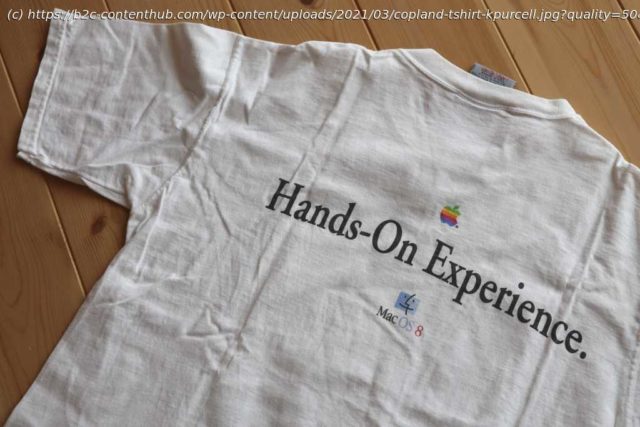With its back against the wall and its internal software development failing, Apple was left with only desperation moves. Fortunately, it made a good one: Mac OS X 10.0, which shipped 20 years ago this week.
To understand the desperation Apple felt in the mid-to-late 1990s, look no further than to one particular t-shirt. On the front was a 3-D rendered numeral eight. On the back, the words “Hands-On Experience” and Mac OS 8 logo. At Apple’s Worldwide Developer Conference in June 1996, many of us got to experience the future of the Mac for the first time. We got the t-shirt for test driving Apple’s transformational new operating system, one that replaced the woefully out-of-date classic Mac OS with something that could compete with Microsoft. The operating system was nicknamed Copland and it never shipped. The “Hands-On Experience” shirts and an accompanying book, “Mac OS 8 Revealed,” were as good it was ever going to get. With its back against the wall and its internal software development failing, Apple was left with only desperation moves. Fortunately, it made a good one, resulting in Mac OS X 10.0, which shipped 20 years ago this week. Classic Mac OS—the Mac operating system before OS X—was built on a shaky foundation. As revolutionary as the original Mac was, it was also an early-1980s project that didn’t offer all sorts of features that would become commonplace by the late 1990s. That operating system had been originally designed to fit in a small memory footprint and run one app at a time. Its multitasking system was problematic; clicking on an item in the menu bar and holding down the mouse button would effectively stop the entire computer from working. Its memory management system was primitive. Apple needed to make something new, a faster and more stable system that could keep up with Microsoft, which was coming at Apple with the user-interface improvements of Windows 95 and the modern-OS underpinnings of Windows NT. That’s where the t-shirt came in. Copland was intended to be Mac OS 8, and it was supposed to ship in the middle of 1996. It was going to offer pre-emptive multitasking, protected memory, a redesigned user interface with multiple themes, intelligent search, broad support for OpenDoc (if you don’t know, don’t ask), and much more. The ship date slipped to the middle of 1997, and some of Copland’s more ambitious features were pushed off even further to a theoretical OS 9 code-named Gershwin. And then, a few months after Apple handed out those t-shirts, it killed the entire project. A replica of the Mac OS 8 Copland t-shirt given to select WWDC attendees in 1996. What instead shipped as Mac OS 8 in the summer of 1997 was a version of the classic Mac OS, dressed up in the clothes of Copland. The advanced search technology, redesigned filesystem, revamped multitasking, and memory protection were nowhere to be found. While it offered some improvements over System 7, Mac OS 8 did nothing to solve Apple’s larger operating-system problem.






